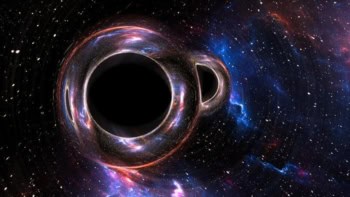
A long-running debate about the distance to the Pleiades cluster of stars has been resolved, claims a team of radio astronomers in the US. The researchers conclude that the cluster is almost exactly as far away as originally thought. This contradicts analyses of data from the Hipparcos satellite cluster, which suggested that the cluster is 13 parsecs closer than astronomical models predict. The astronomer who made those Hipparcos calculations, however, is standing by the original results, claiming that there are errors and unjustified assumptions in the new research.
The Pleiades is the star cluster most obvious to the naked eye in the night sky, and has been known since antiquity. In modern astronomy, the distance to the Pleiades is used to calibrate the cosmic-distance ladder, allowing the distances to star clusters and galaxies that are further away to be inferred. For this reason, it is important to know this distance precisely, and multiple calculations of it have been made using various methods.
The generally accepted distance was about 134 parsecs (about 437 light-years) until, in 1999, Floor van Leeuwen of the Institute of Astronomy in Cambridge, UK, used data from the European Space Agency’s Hipparcos satellite to produce what was the most precise calculation to date. The result was obtained with trigonometric parallax, using the apparent shift in the position of the target star relative to distant “fixed” stars as the Earth orbits the Sun. This is independent of any stellar models, depending only on the fundamental laws of geometry.
Controversial analysis
Van Leeuven arrived at a distance of about 120 parsecs. He refined his analysis in 2009, reaching a similar conclusion. This figure was highly controversial as the potential theoretical implications of such an unexpected discovery were huge, putting into question the amount of helium in the stars making up the Pleiades and even suggesting that hitherto unknown physics governs the early lives of stars.
In the new research, Carl Melis of the University of California, San Diego and colleagues at several other US institutions did their own trigonometric-parallax measurement of five selected stars in the Pleiades cluster using very long baseline radio interferometry. In this technique, measurements are made by linked radio antennas spread across the world, giving the total resolution of a telescope the size of the Earth. The researchers found that the distances of all five stars were in broad agreement with the original figure, with the lowest value being 134.8 parsecs and the highest being 138.4.
Melis says that, taken together with all the other measurements of the distance to the Pleiades cluster that back current theoretical models, these measurements demonstrate conclusively that the Hipparcos data were erroneous. “We’ve already come to that conclusion,” says Melis. “This is just reiterating it, and really hitting the hammer on the head of the nail and driving it into the coffin.”
Not convinced
Van Leeuwen, however, is not convinced. Hipparcos catalogued more than 100,000 stars, including multiple clusters like the Pleiades, and found answers in line with predictions for the others. The distance to the Pleiades was calculated from separate measurements of more than 50 stars, and Van Leeuwen says that, for that distance to be incorrect, Hipparcos would have needed to give wrong answers in these specific measurements. He adds that there is no convincing explanation for how this could have occurred.
He questions several technical details of the new measurements, such as the fact that the proper motions (the velocities relative to the Sun) of the Pleiades stars vary widely, whereas the proper motions of the stars within a cluster should be almost the same. “As soon as you bring the proper motions in line with each other,” he says, “all the parallaxes will change.” He also says that the Hipparcos figure can be explained. “There is no new physics needed,” he says. “The only thing that’s needed is a re-assessment of the depths of the convection layers in these stars, which have conveniently been assumed to be fixed and constant during the main sequence phase.”
Waiting on Gaia
In 2013 ESA launched Gaia, a successor to Hipparcos with much higher specifications, such as higher-sensitivity cameras, that will measure the parallaxes of thousands of stars in the Pleiades cluster. The design principles are conceptually similar, which leads Melis and colleagues to suggest that the unidentified error they believe distorted the Hipparcos measurements of the Pleiades could also affect Gaia. Nevertheless, Melis suspects that “the Gaia measurement is not going to be the same as the Hipparcos measurement…Hopefully then the Hipparcos community is going to have to face the fact that Hipparcos did not produce the correct result.”
The research is published in Science.



